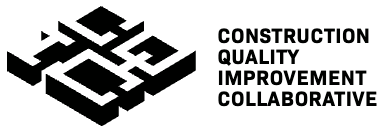‘The Cole Report’ as it is known in the construction sector, is the report prepared by Professor John Cole on his independent Inquiry into the Construction of Edinburgh Schools. This investigated the causes behind the event when a wall collapsed at Oxgangs Primary School in January 2016.
This incident and the inquiry which followed is regarded as a pivotal moment for the construction industry in Scotland. It has brought an intensity of focus into what can be done to improve construction delivery.
A copy of the Report of the Independent Inquiry into the Construction of Edinburgh Schools (Feb 2017) can be found through this link – Cole Report.
The Cole Report contains many recommendations for the construction sector. These relate to areas such as: procurement, construction, training and recruitment, the role of the building standards and independent certifiers and the sharing of information. The report and its recommendations were a trigger for much work on construction quality across both the public and private sectors at the time it was published. It remains a foundation and inspiration for the CQIC.
The following is an abstract of some of the recommendations.
- Public sector bodies engaged in the procurement of public buildings should maintain, or have assured access to, a level of expertise and resources that allows that body to act as an ‘intelligent customer’ in undertaking transactions with Private Sector Construction Companies.
- In any construction contract let by a public body, the public body should ensure that due diligence is undertaken at an appropriate level to confirm that the requirements of that contract are actually delivered in accordance with the terms of that contract.
- In seeking to transfer as much risk as possible away from themselves in relation to the design and construction of facilities, public bodies should understand that they cannot delegate to others the duty that they ultimately owe to the public to ensure the provision of a safe environment for the delivery of services to their communities and this should inform their approach to their quality assurance processes of projects.
- The procurement strategies adopted by public bodies should include appropriate investment in the provision of informed independent scrutiny of projects when they are being designed and constructed so that they are built right first time, rather than clients subsequently seeking to rely on their ability to seek remediation or compensation if they are not. It is the view of the Inquiry that seeking savings through cutting investment in quality assurance is inevitably a false economy.
- There should be a more informed approach among public bodies as to how best practice methodologies aimed at optimising the quality of design and the quality of construction can be incorporated into the current models of procurement of public buildings, whilst maintaining other benefits of these processes.
- Public sector clients should engage appropriately qualified individuals or organisations with the necessary professional construction expertise to undertake on their behalf an appropriate level of ongoing inspection of the construction of their buildings. This is in order to identify and report defective work to the client and to ensure proper rectification of same.
- Public bodies should review current procurement arrangements to ensure they are providing the optimum level of communication between clients and key members of the design team and that clients are able to benefit to the fullest extent from their professional advice and expertise.
- Contractors should be required to put in place appropriate arrangements for the recording of all subsequent changes to final ‘construction issues’ drawings and arrange for the production of a final as-built set of documents to a standard suitable for issue to the client for retention as a permanent record of the detail of the project.
- It is critical that there is effective communication of essential design information in an accessible form to tradesmen such as bricklayers working on site. In relation to the construction of walls and the incorporation of related structural accessories, in order to avoid mistaken omissions of accessories such as wall ties, head restraints or bed joint reinforcement, it is recommended that all relevant information should be fully integrated into a single document, rather than requiring reference by bricklayers to a range of different documents produced by different members of the design team.
- The design and construction professions should consider the need for the development of a better approach to the integration of documentation to reflect the practical needs associated with the implementation of design information in a building site environment.
- The most common method of paying bricklayers in recent years has tended to be based on the number of bricks laid rather than on the time that bricklayers work. As generally applied, this approach would appear not to take account of the number, type and complexity of accessories that are required to be incorporated. The construction industry should seek to review this approach to remove any perverse incentive of the payment mechanism to encourage the omission of elements providing the essential structural integrity of walls.
- It is therefore recommended that the construction industry should seek to introduce, develop and promulgate standardised best practice methods in relation to the requirements of the related quality assurance processes, how they are implemented and who implements them.
- To resolve this issue (referring to Building Standards level of detailed inspection in achieving the underlying core objective of their function as expressed in the Building (Scotland) Act 2003 which is ‘securing the health, safety, welfare and convenience of persons in or about buildings’), there is a need for Government and the construction industry to consider the introduction of methods that would provide Buildings Standards with the required level of assurance in risk areas.
